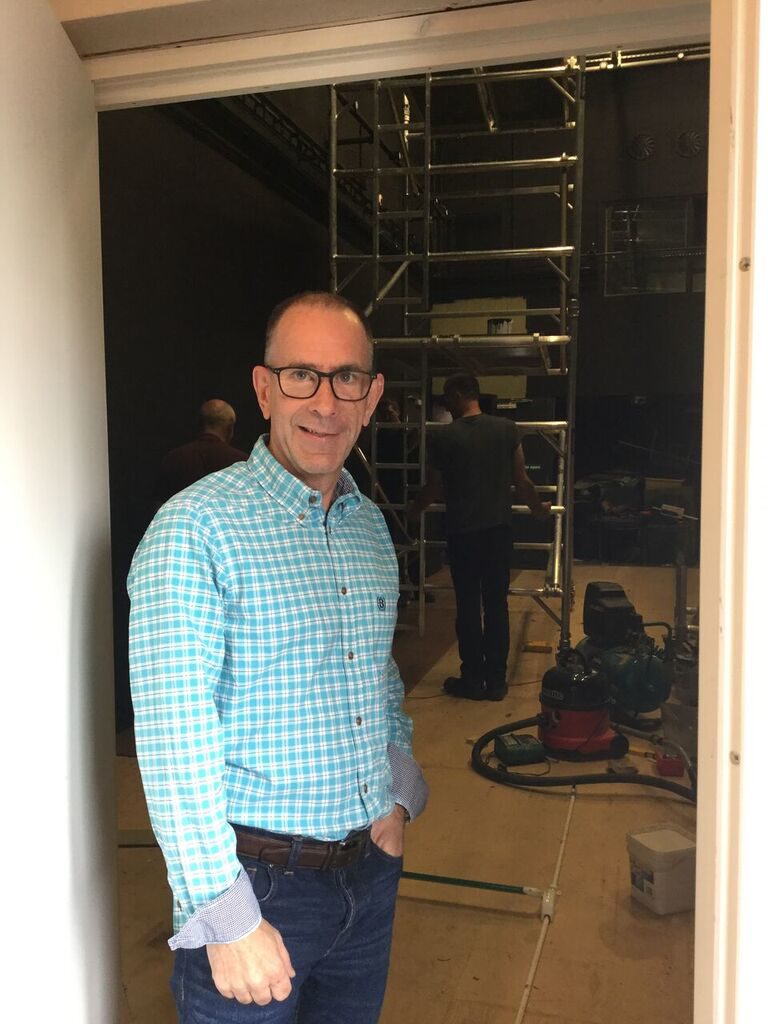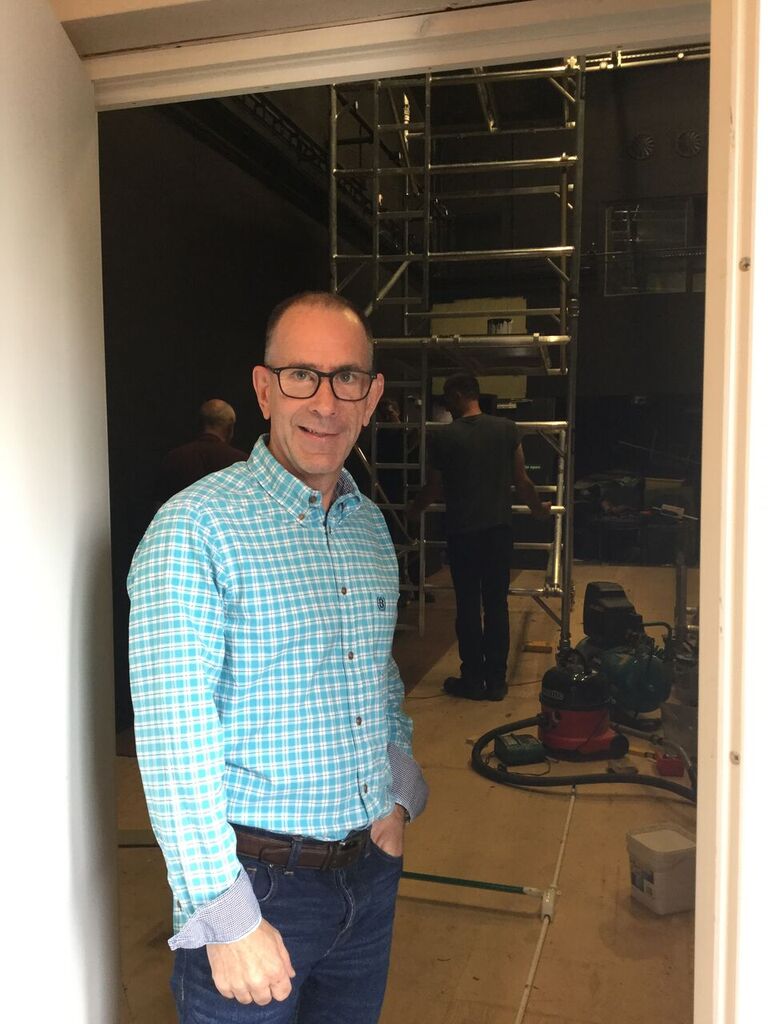 Following a cycle of refurbishment, Cheltenham’s Everyman Theatre has reopened its studio. Newly dubbed the Irving Studio Theatre, after a generous donation by the Charles Irving Trust made it all possible (the late mayor and MP for Cheltenham had in his lifetime been a keen patron of the Everyman), this gives the Everyman an opportunity to forge ahead with its artistic vision. Speaking to creative director Paul Milton, I inquired about how the Everyman’s studio space had developed over the years, and their direction for it moving forward.
Following a cycle of refurbishment, Cheltenham’s Everyman Theatre has reopened its studio. Newly dubbed the Irving Studio Theatre, after a generous donation by the Charles Irving Trust made it all possible (the late mayor and MP for Cheltenham had in his lifetime been a keen patron of the Everyman), this gives the Everyman an opportunity to forge ahead with its artistic vision. Speaking to creative director Paul Milton, I inquired about how the Everyman’s studio space had developed over the years, and their direction for it moving forward.
The smaller stage actually had very modest beginnings when it opened in 1986. ‘That studio was built as a rehearsal room, but even early on it was getting used for plays. It was called the Richardson Studio at that point – after Ralph Richardson who was born in the town – and they repurposed it very quickly. In fact, for the opening production of Peer Gynt, they clad the studio walls with planking and that was never taken off. People always just thought it was decor, but it was one of a few features in that studio that just hung around. If nothing else, one of the things we have done with this refurb is clad over that!’
The studio space over the years had accumulated lingering features, either remnants from productions like Peer Gynt or simple wear and tear. As much as anything else, Paul tells me, the physical refurbishment of the Irving Studio is a quality of life upgrade. ‘One of the things that really needed to change was the seating. The studio’s had the seating changed three times whilst I have been here but the last set we had in were bright red. That had to go as any empty seats could get really picked up by the lighting. It’s little things like that which had to go. The chairs, the old black drapes, the air-con, etc. Because the stage hasn’t had a full refurb since it was first built.’
But bringing the technical specifications of the stage up to scratch is really only half the story. Paul has changed the way the studio was used since becoming creative director in the 2000s and with the studio now more presentable and function than ever, there’s even greater potential for the space. ‘In the early 2000s, the studio was being used for a few different things most nights of the week. One-night comedy productions, music gigs, the odd one-week show. I came in and said it wasn’t healthy to try to fill it every night. There simply wasn’t enough of an audience for constant use.’
A more focused and cultivated programme seemed to suit the space better, but Paul strategy is multi-stranded. ‘For the last few years we’ve been trying to use it as a development space as well as a performance space.’ This is the crux of Paul’s direction for the Irving. Radically expanding the Everyman’s capacity to develop work which will be shown in Cheltenham and much further afield, but also broadening the types of work shown. A modernised studio space allows Paul to do this on a larger scale and with more ambitious productions. ‘It’s now a talent development space, a workshop space, and indeed still a rehearsal space. With productions being made in there that quickly outgrow the size limitations of the Irving, it’s part of our promotional drive because it gets shows out to other parts of the country with our name on it. That’s precisely what is happening with shows like On The Mend. It’s an upcoming show about WWI volunteer hospitals in Cheltenham but the performances are taking place on the sites of the hospitals because it’s too big to be viable in the studio itself.’ This is probably the most interesting aspect about the Irving. It’s going to be a fruitful asset for producing a lot of work, but a lot of that work is going to be growing beyond the confines of the Everyman itself. Paul is most certainly enthused to be spreading the theatre’s influence. ‘There’s a lot more that is going to be happening in the studio than ever before, it’s just that it is not all for public viewing.’
The public face of the Irving is still going to be plenty busy though. ‘With that much smaller space, it’s always going to have limited by capacity. But conversely, we can comfortably put on shows which simply don’t cater towards a large audience. We’ve previously had productions on social alienation, mental health issues. That’s never going to sell 700 seats on the main stage but it does cater towards a specific audience. And these shows do sell well for us on that scale. And now we’re offering a better experience for theatre-goers in that space.’
The programme for the Irving looks to be engaging with wider array of issues and social experiences. ‘The aim is to target specific communities and organisations for specific plays. We always get attendees seeing things outside their usual experience or comfort zone. There is a socially aware audience we can rely on to see these things but that’s alongside tremendous success in getting in audiences who find plays that speak to their experience.’ Looking through the Irving’s roster, you can see this borne out. Knock Knock tackles deafness, the Mono-Black double bill in Black History Month, 6 Women on transgenerational feminism, And Then They Came for Me on the Holocaust, and This Is Who I Am on the gay refugee experience.
The degree of lassitude given in producing and staging these smaller focused pieces is as much off the back of success with filling the main house as it is with having a smaller space in the Irving that theatre companies and more niche audiences can use. ‘Our new chief executive Mark Goucher has been tremendous at getting loads of audiences in. Big commercial shows are coming into the main stage regularly, and that is great in its own right. But on top of that, Mark is able to direct money into these shows which push boundaries, or speak to issues, or even our programmes around education and community.’
I ask Paul if there is such a sharp divide between the audiences that go to the big shows compared to those he’ll be targeting for his programming in the Irving. ‘Theatre audiences have changed a lot. Now we need to be targeting specific communities because there is a much more diverse population out there. We need to be playing to everyone, not just our regular audience in the main house.’ The Irving therefore, I posit, represents a response to the every morphing needs of keeping theatre relevant to a range of modern audiences since the idea of a homogenous theatre-going community does not exist anymore. He nods but adds the caveat that some plays do bridge these social distinctions. The big one being at Christmas. But even that has the Everyman diversifying its output. ‘There is a huge audience for our panto. Always has been. But there are age demographics at either end of that panto audience who might want something different.’ Indeed, the Irving is not simply a forum for hard-hitting social theatre. It’s a space for all with lighter productions too. ‘The Velveteen Rabbit is for the much younger end. For the kids who might get scared or how simply might struggle to sit through a 2-hour panto. So this a 1-hour show told in a very gentle way. And likewise, there is a theatre-going audience who doesn’t want to necessarily see a panto at Christmas but would like to see something festive. So we now do a grown-up show alongside the panto: this year it’s The Old Curiosity Shop.’
The whole direction of the Irving seems to be founded on optimism, and it’s exciting to see such a robust and varied programme brought about by this refurbishment. It’s almost a pity that so much of the work going on in the space will be ranging potentially much further than Cheltenham, but Paul assures me there will be plenty of work coming up addressing local issues and work directed at the Cheltenham community. In the meantime, there’s already much on the sleight to look forward to in the Everyman’s newly reopening and renamed Irving Studio Theatre.
Fenton Coulthurst September 2018


